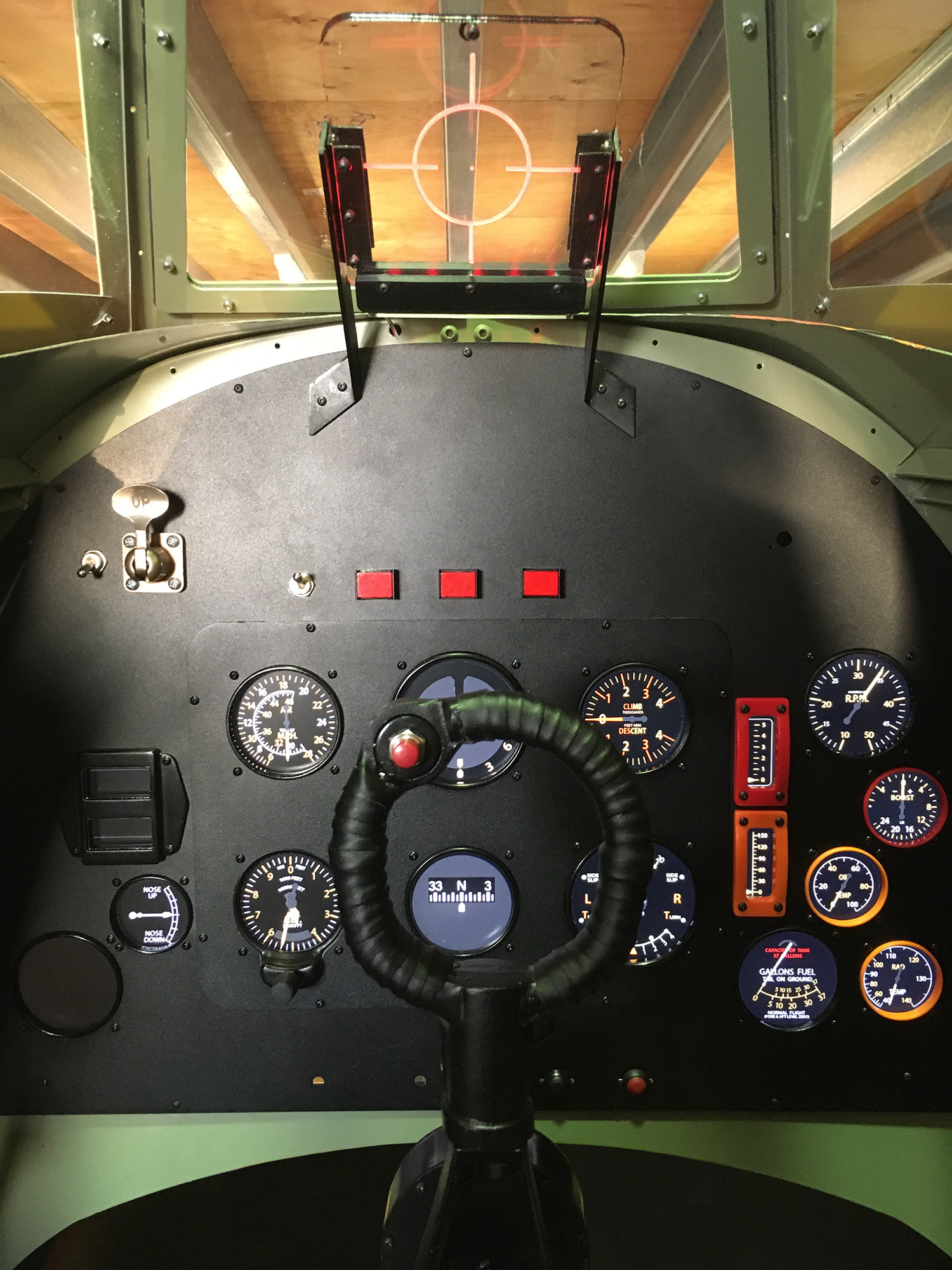
Spitfire Mark VIII
Spitfire Mark VIII
- Certification N/A
- Technical characteristics
- Single engine based on the Merlin.
- Analogue configuration
- Used mainly for Museums
- Optional vibration system
- Replica Aluminium Cockpit
- Replica Throttle Quadrant
- Detailed instruments
- Accurate sub-panels
- Realistic trim and pedals
- Realistic gun sight.
- Startup and shutdown sequences
- Visual System
- 3m DOME Scenery System
- 240° x40° Visual display
- 2 x HD projectors.
- Worldwide terrain scenery
- 1 x detailed customer defined WWII airfield.
- Navigational database
- N/A.
- IOS
- Feature-rich Instructor Software
- Large Map screen
- Easy Interface.
- Footprint
- Room size is recommended at 4.m x 4.m x 2.8m
- Scenario based battle situations.
- AI enemy aircraft
- Create operational scenarios.
- Upgradable Options
- Vibration Option
- Turnkey solution advantages
- Shipping and installation
- On site instructors and technical training
- On site assistance with initial certification.
- 12-month warranty and remote maintenance.
- High end computers
- Optional spare parts kit
- Custom STOM and SOP.
- System is on wheels and as such is easy to move around.
Built for Safety
OPTIONAL ADDONS
NVG, SIM2SIM NETWORKING
The Supermarine Spitfire, one of the most iconic and recognizable aircraft of all time. The brainchild of R. J. Mitchell, the Spitfire first flew on March 5, 1936, with the Mark I entering service with 19 Squadron RAF, in the summer of 1938. During the Second World War, Great Britain produced a total of 20,351 Spitfires in about 24 different variants.
GeoSim’s full cockpit Spitfire simulator is based on the Mark VIII variant, which almost exclusively served overseas, in the Mediterranean, Middle East and Pacific theatres. The RAAF operated a large number of MKVc’s and MKVIII’s in the South-West Pacific, however the Spitfire was unsuited to the climate and rugged conditions and did not perform as well as it did in Europe. Nevertheless, from 1944 – 1945, the Spitfire MKVIII saw significant action in this theatre of the war, especially with No.1 (Fighter) Wing, under Wing Commander Clive ‘Killer’ Caldwell, Australia’s leading flying ace.
With most of us, here at GeoSim Technologies, being warbird enthusiasts, this Spitfire simulator was a project which filled us with childish delight! We built it with sheet aluminium riveted to an exposed interior framework, to mimic the construction of the real Spitfire. In addition to featuring a realistic instrument panel and gauges, the simulator’s greatest point of attraction (for me anyhow) is the iconic spade-grip control column and the light-up gunsight. This labour of love can be found at Hunter Warbirds in Scone, NSW, just waiting to give you a chance to experience some of the exhilaration of flying a real Supermarine Spitfire.



